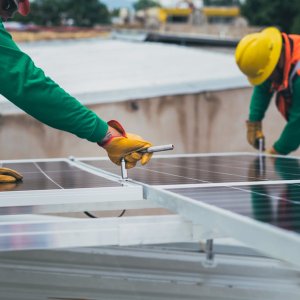A Snapshot of Mexico’s Inflationary Trend

STORY INLINE POST
Next year will be a consequential year for the Mexican economy ahead of the 2024 presidential election, which is likely to be one of the most polarized and gruesome in Mexico’s history. However, amid geopolitical tensions, global economic slowdown, a downward cycle in the US economy, and ongoing domestic regulatory uncertainty that continues to vex the overall business climate, among other challenges the economy is facing, I would argue rising inflation is the most pressing concern for the Mexico outlook in 2H22 and 2023.
Inflation increased to 8.15 percent YOY in July, reaching a historical peak on the back of food prices (12.09 percent YOY) and merchandise (10.07 percent YOY). The fact that high food prices continue to be the main inflation driver is a worrisome signal, as this trend is more contingent upon global factors than domestic ones. Indeed, skyrocketing food prices stem from Russia’s invasion of Ukraine, a conflict with no end in sight anytime soon. According to the World Bank, global food prices are likely to increase by 20 percent in 2022, mainly due to the war in Ukraine. Thus, considering that wheat, corn, and fertilizers — all key items for Mexico’s food price dynamics — depend in the short term on the endurance of that conflict, it is unlikely that inflation eases to below Banxico’s targeted range (3 percent +/-1) at least until 4Q23.
To be fair, Mexico’s government has been able to contain price increases better than most Latin American governments because of a mix of external factors and policy changes. Thanks to the current juncture of high oil prices, Mexico has been able to keep inflation to single digits instead of double-digits, as Jonathan Heath, one of the most prominent members of Banxico’s Board of Governors, recently pointed out. Indeed, the 100 percent special tax on production and services (IEPS) was the main reason why inflation ended in June at 8 percent — and not at around 11 percent. Yet, it remains to be seen if this tax break can continue beyond high oil prices, which recent news indicates is moving in a different direction. The López Obrador administration has started to dial down the IEPS tax break, aiming to preserve the stability of public finances. As oil prices falter, the Mexican government is walking a fine line, trying to tame inflation without dislodging government finances. To understand this dynamic, look no further than the tandem relationship of government revenues and oil exports.
The 2022 federal budget was initially calculated upon a US$55 per barrel price for the Mezcla (Mexico’s oil). However, on the back of oil prices averaging above US$100 per barrel, Mexico has received substantial oil windfalls, which have allowed it to subsidize gas prices. The Mezcla averaged US$98 per barrel in 1H22, helping a surge of oil exports, which increased by 54 percent YOY (worth US$10.2 billion) from January to April. Against this backdrop, President Andrés Manuel López Obrador (AMLO) was able to announce in early March the gas price subsidy, which has helped keep inflation below 10 percent. Indeed, as domestic gasoline prices have become one of the main drivers of rising inflation across Latin America, in Mexico, gas prices measured by US dollars per liter only increased 7.8 percent from January to May, a small change compared with Peru (42 percent), Brazil (29.8 percent), Chile (15.7 percent), and Argentina (14.2 percent). However, this tax break is likely to continue to be rolled back as oil prices decline and AMLO’s government continues to be committed to preserving fiscal stability. Bear in mind that the IEPS decreased by 39 percent YOY (MX$355.8 billion) from January to May in 2022 and the government subsidy for gas prices cost around US$4.30 billion during the same period.
The measures adopted by AMLO’s government and fueled by high global oil prices, coupled with Banxico’s hawkish monetary policy, are the main bulwarks keeping inflation at the current levels. Inflation should start easing in the coming months but not as fast as the most optimistic views have suggested. As executives and firms think about the menaces to Mexico’s operating environment for the rest of 2022 and 2023, I suggest putting inflation at the top of the list. Mexico will continue to be an attractive market vis-à-vis other Latin American and emerging markets in the short to medium term, with the caveat of an inflationary trend as the main hurdle impacting company revenues.








 By Alejandro Valerio | Founder -
Wed, 08/31/2022 - 11:00
By Alejandro Valerio | Founder -
Wed, 08/31/2022 - 11:00
















